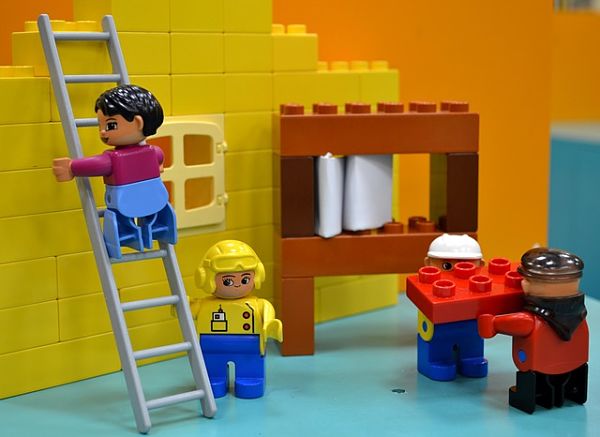Librarian Survey Focuses on Embedding ‘In Life of the User’
“In recent years,” write the authors of a new white paper on academic libraries, “the library sector has seen considerable change, with disruptions in technology, changes in resource availability, and the impact of digitization on all areas of education and learning.” And then came COVID-19 …
The authors quote Lorcan Dempsey, who currently conduct research and development for libraries at the nonprofit OCLC Research: “the forced migration online may mark a final transition into a more fully digital identity for the library.”

The nature of that digital identity informs Librarian Futures: Charting Librarian–Patron Behaviors and Relationships in the Networked Digital Age, which follows from a survey of 4,000 librarians and patrons and synthesizes those survey results with usage data from Lean Library, data from a range of librarian and library stakeholder interviews, and contributions from partners scite, Springshare, OpenAthens and OCLC. “The report,” say the authors, “seeks to build on previous research into the ‘future of the library,’ particularly ideas of the library embedding itself ‘in the life of the user’ to maintain mission relevance and impact in the networked digital age.”
That idea of the library molding itself in the library user’s workflow, rather than the patron supplicating themselves before the librarian, provides the overarching framework for the report.
“There is still this thought process of the library being this warehouse of books,” Sally Gibson, director of library for Missouri Western State, told the authors. “The library is hanging on the perimeter in terms of the patron’s academic experience . . . getting in there is existential for the library.”
Identifying this crisis, and overcoming it, reflects the paper’s two sections – “Today” and “The Future.” “The report identifies a knowledge gap between librarians and patrons, in terms of patrons often not understanding the full reach of librarian support available to them,” writes lead author Matthew Hayes, managing director of technology Lean Library, a technology provider that promises to ‘put the library in your patron’s workflow.’ (Lean Library is part of the Technology from SAGE portfolio; SAGE Publishing is the parent of Social Science Space.)
He continues, “It also suggests some disconnect between the activities librarians prioritize versus the needs of their patrons.” In fact, the report notes that 79 percent of faculty and 74 percent of students begin their discovery process outside of the library, a finding that crystallizes the idea that putative patrons are probably unaware of the full extent of librarian support available to them (and that librarians may be equally ignorant of their customers’ emerging needs).
Patrons, for example, tend to prefer self-service support “at the point of need,” with 1:1 interactions reserved for higher level queries. “Enhancing discoverability of librarian guidance and embedding it at the point of need would meet these preferences and enable librarians to focus their efforts on high-quality, high-stakes patron interventions.”
“We have these unintentional impediments to access and content and are constantly dragging people back into the library,” the reports quotes Ian Robson, head of information resources at Queen’s University Library. “This is not a value-add discussion with the library. We want discovery to be as frictionless as possible. Patrons just want to get that PDF. Frictionless access should be what both patrons and libraries want, so that libraries can focus on service.”
The report details the modern “workflow librarian” as a role that embodies a “compelling digital presence” that translates the physical concept of the library into the digital world. “This,” according to the report, “will bring benefits of closer interactions between librarians and patrons and with that a deeper understanding of patron needs and librarian value, with the resulting loop of patron need translated to librarian service.”
Or as Linda Van Keuren, assistant dean for access and resource management at Georgetown University Medical Center, put it: “My goal as a 21st-century librarian is to provide uncomplicated access to high quality information wherever and whenever the user needs it. My library’s busy users need to access scholarly information within their workflow and with minimal barriers. I want library resources right on the shoulder of the patron.”
One such intervention could lie in the traditional librarian wheelhouse of getting their arms around masses of information across disciplines. “Despite the centrality of literature search to patron activity,” writes Hayes and report co-authors Fiona Henry, growth and engagement manager at Lean Library, and Rebekah Shaw, senior market research analyst for SAGE Publishing, “only 36 percent of patrons consider ‘content evaluation’ an important skill. In an era marked by disinformation and information surfeit, screening the content patrons use for learning and research should be more important than ever—and is a core librarian competency.”
Another example of positive intervention offered in the paper is that libraries can help disseminate and promote their faculty’s research, a key avenue for support since 54 percent of faculty patrons interviewed consider publication essential to their success, but only 21 percent consider the promotion of this research core to their activity.
Librarians, however, have allies in this effort: their own patrons. “Patrons are resoundingly appreciative of their librarians,” Hayes and company write, “and consider their contribution impactful to their academic success.”































































































